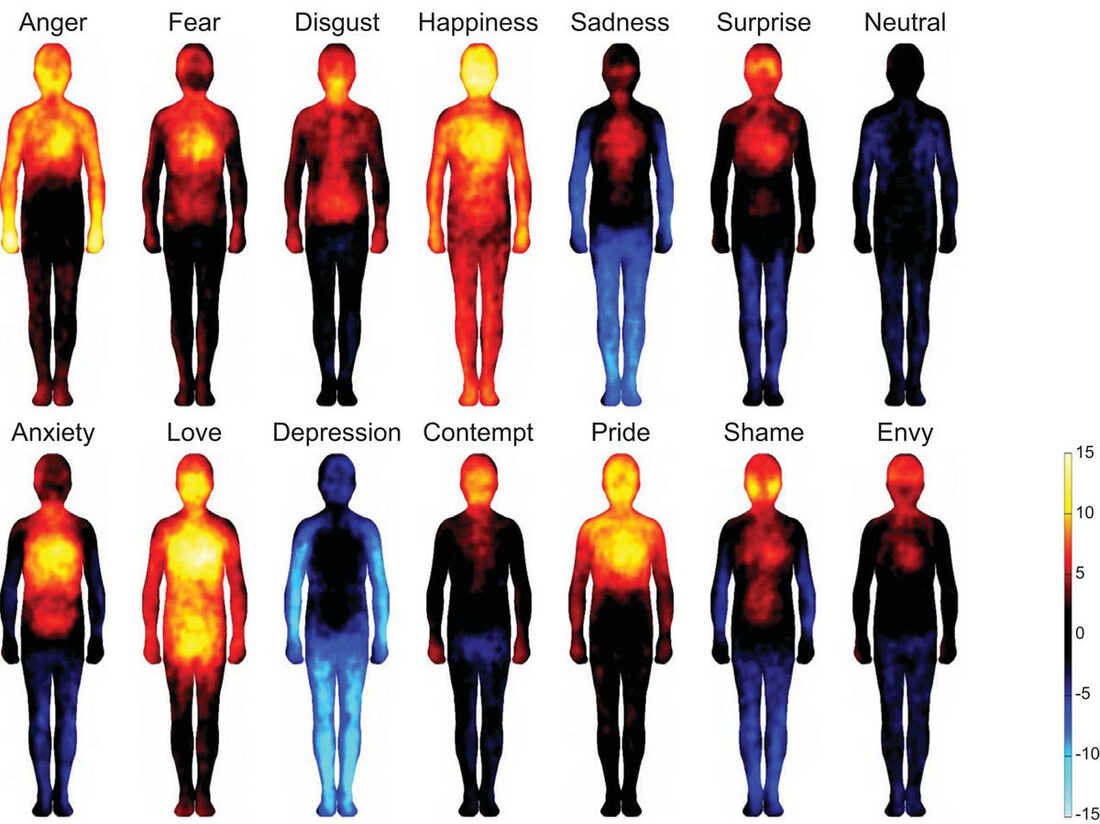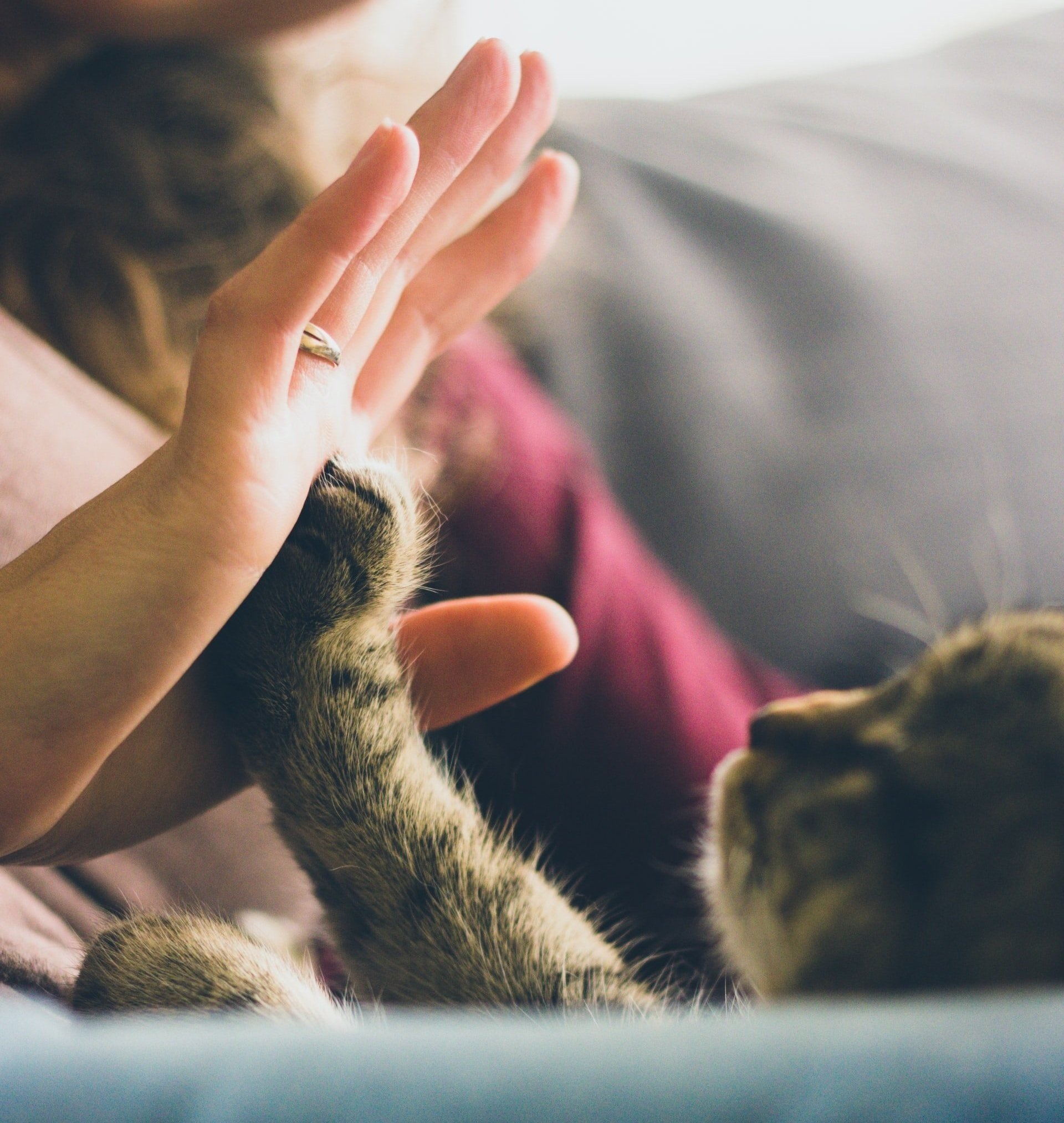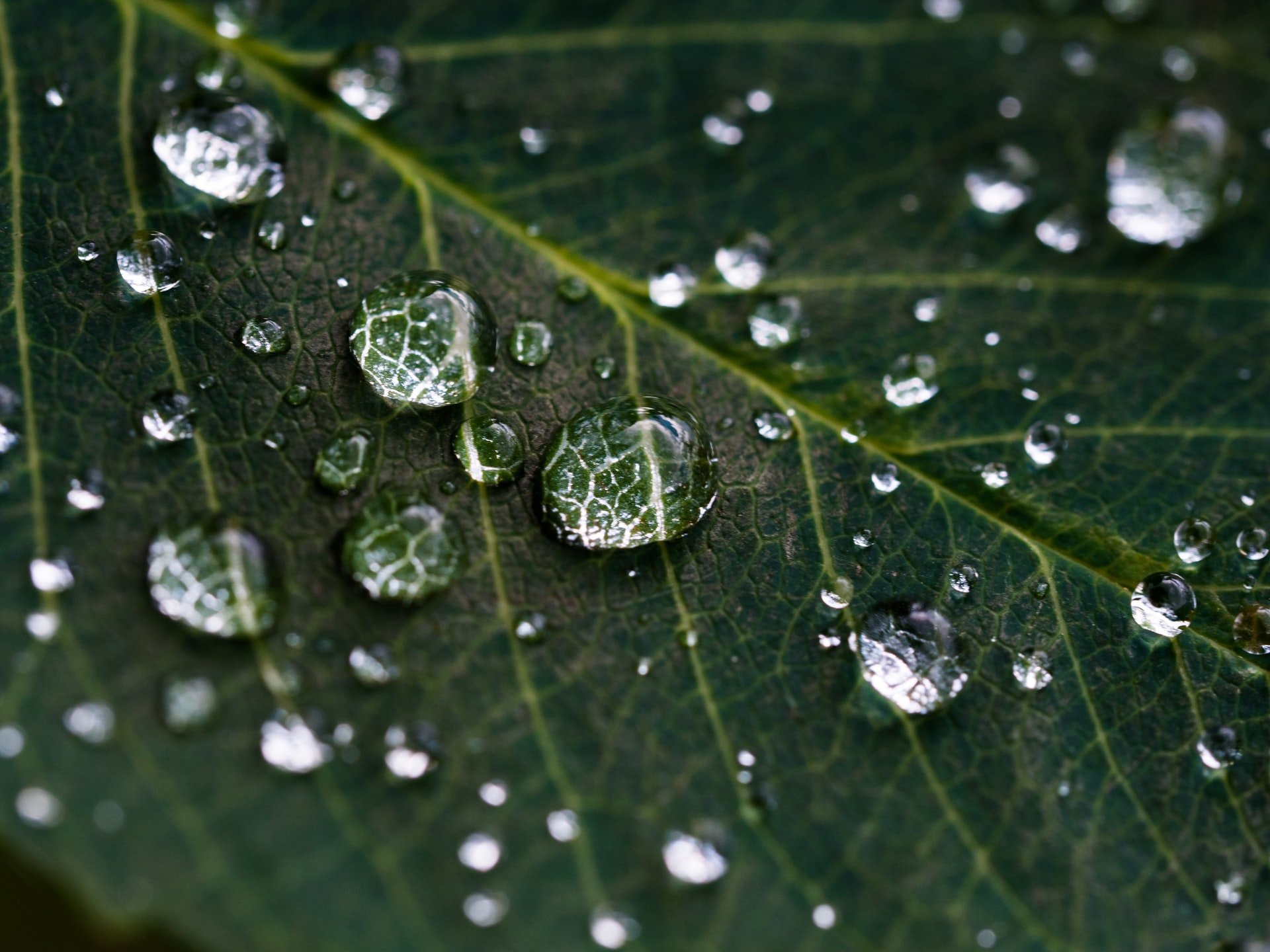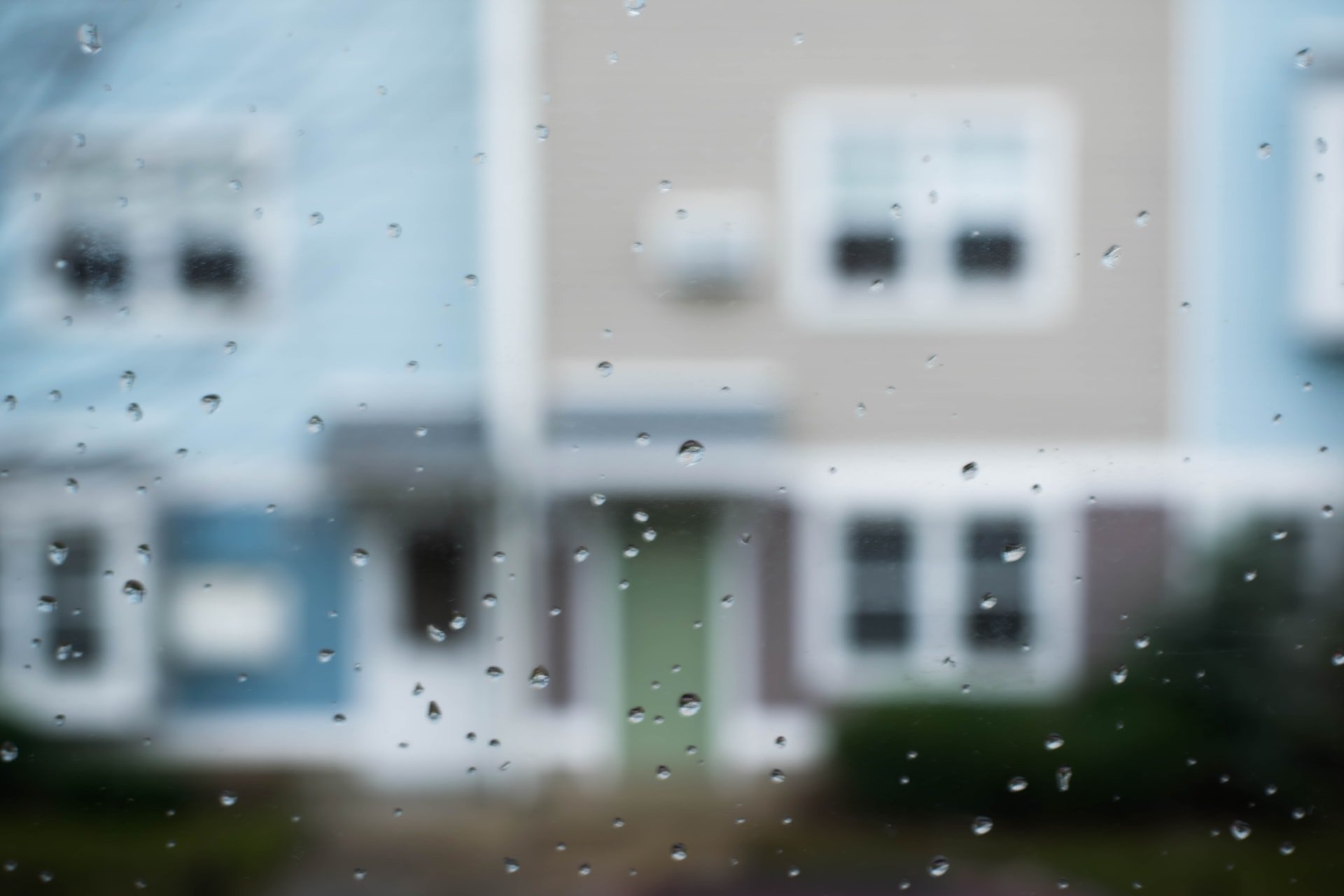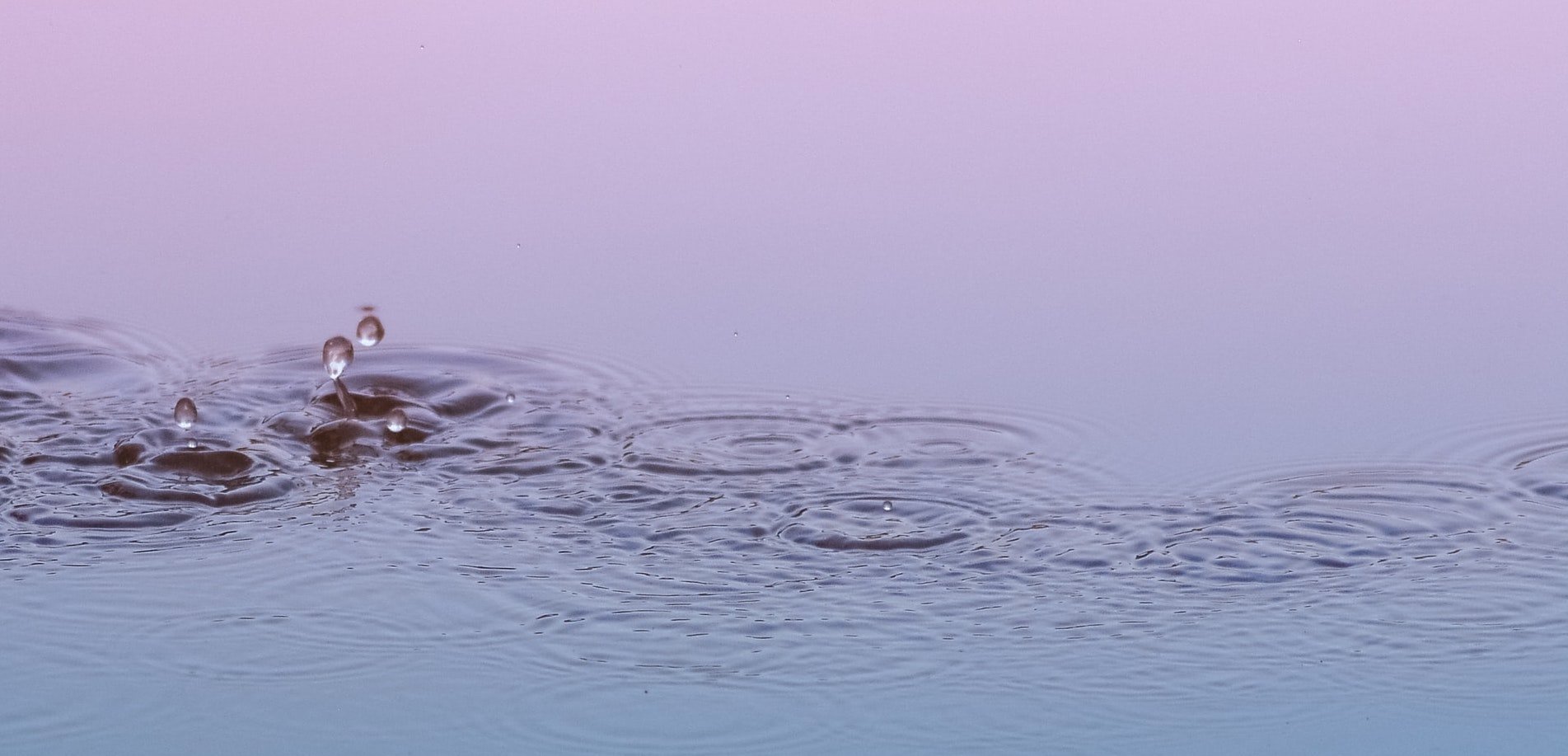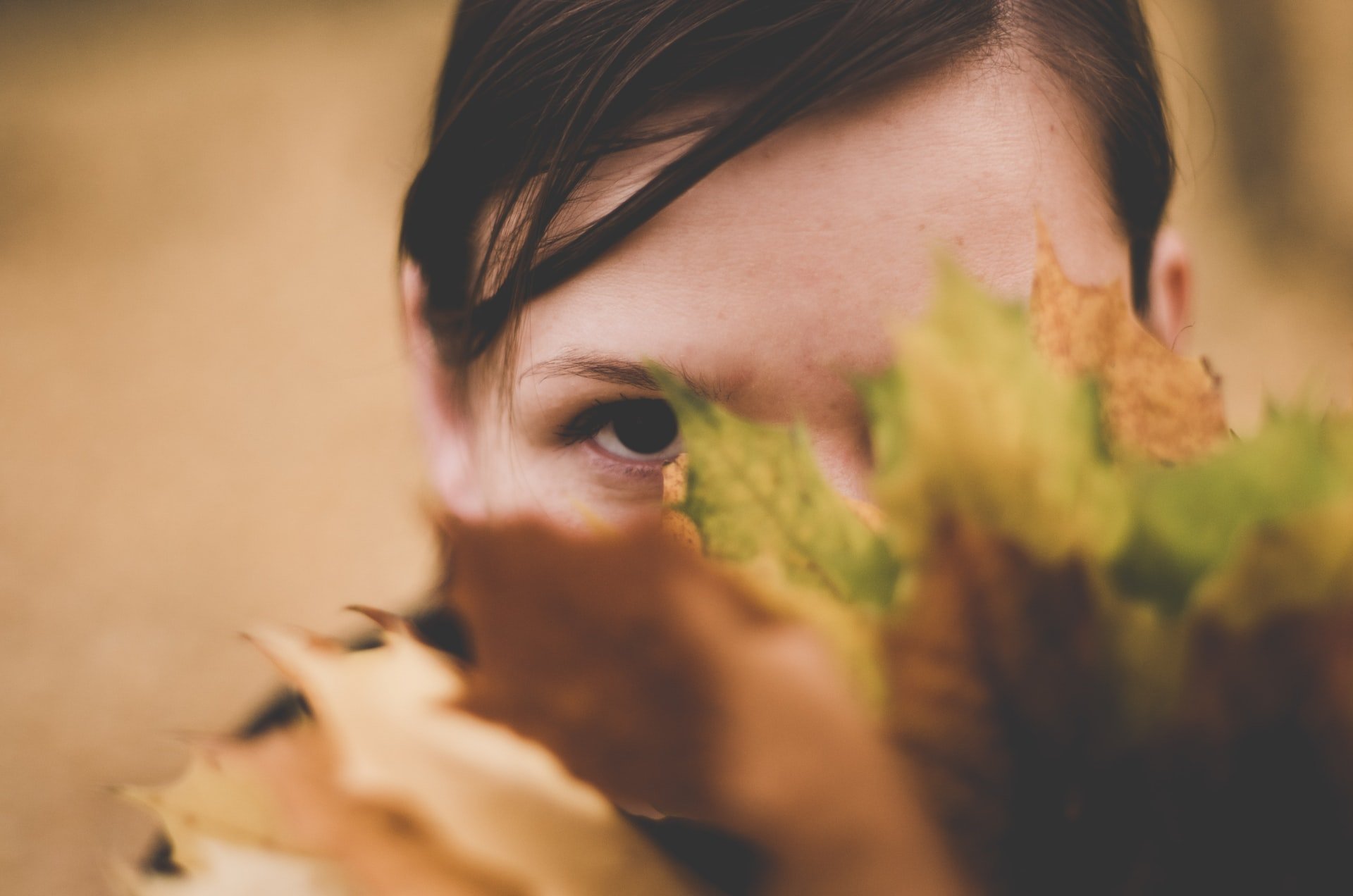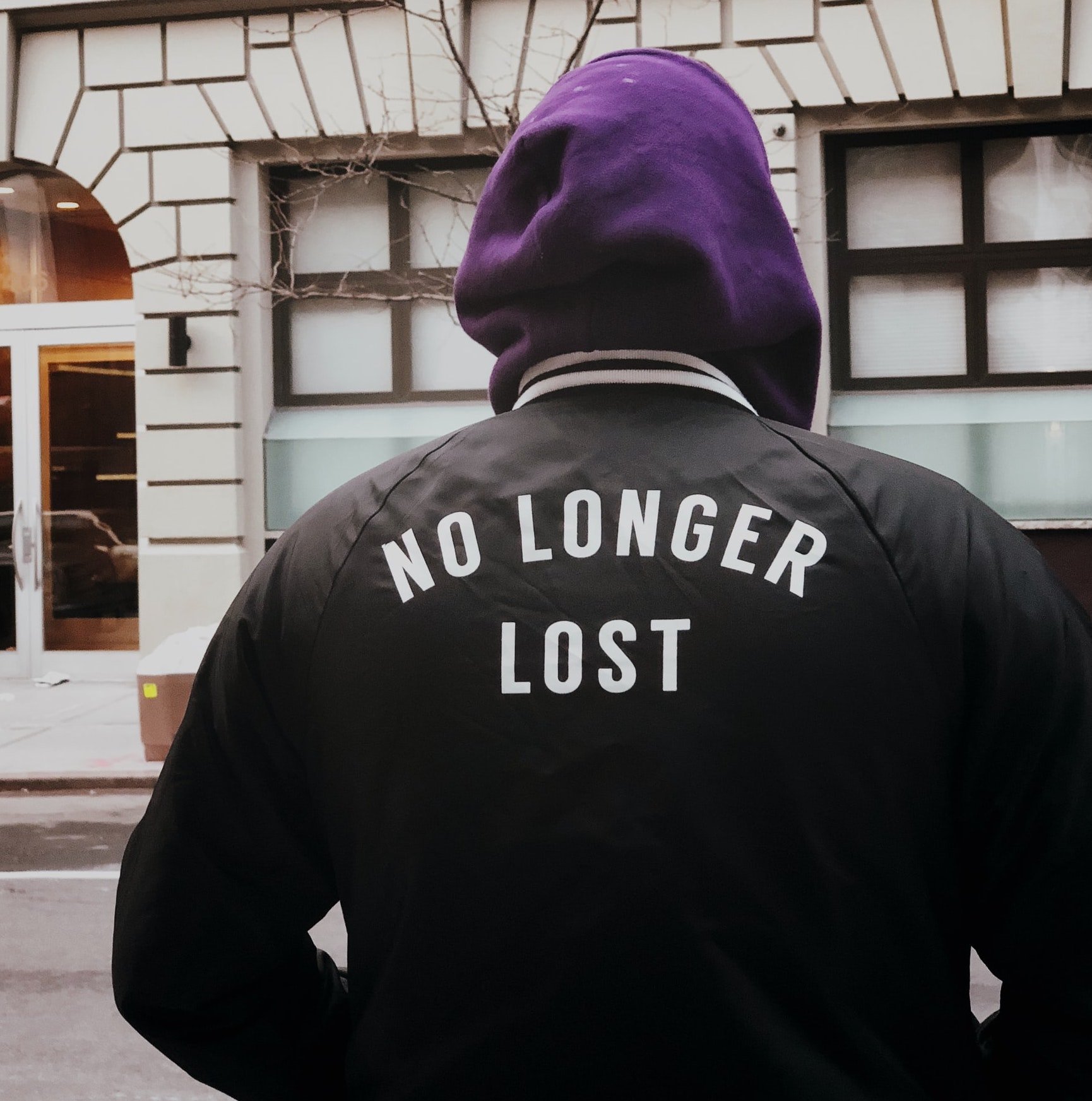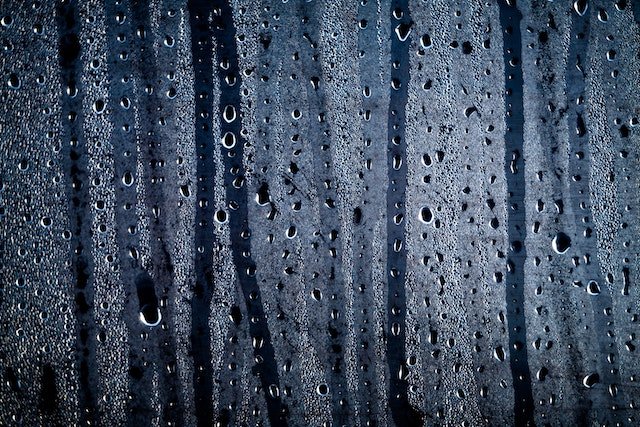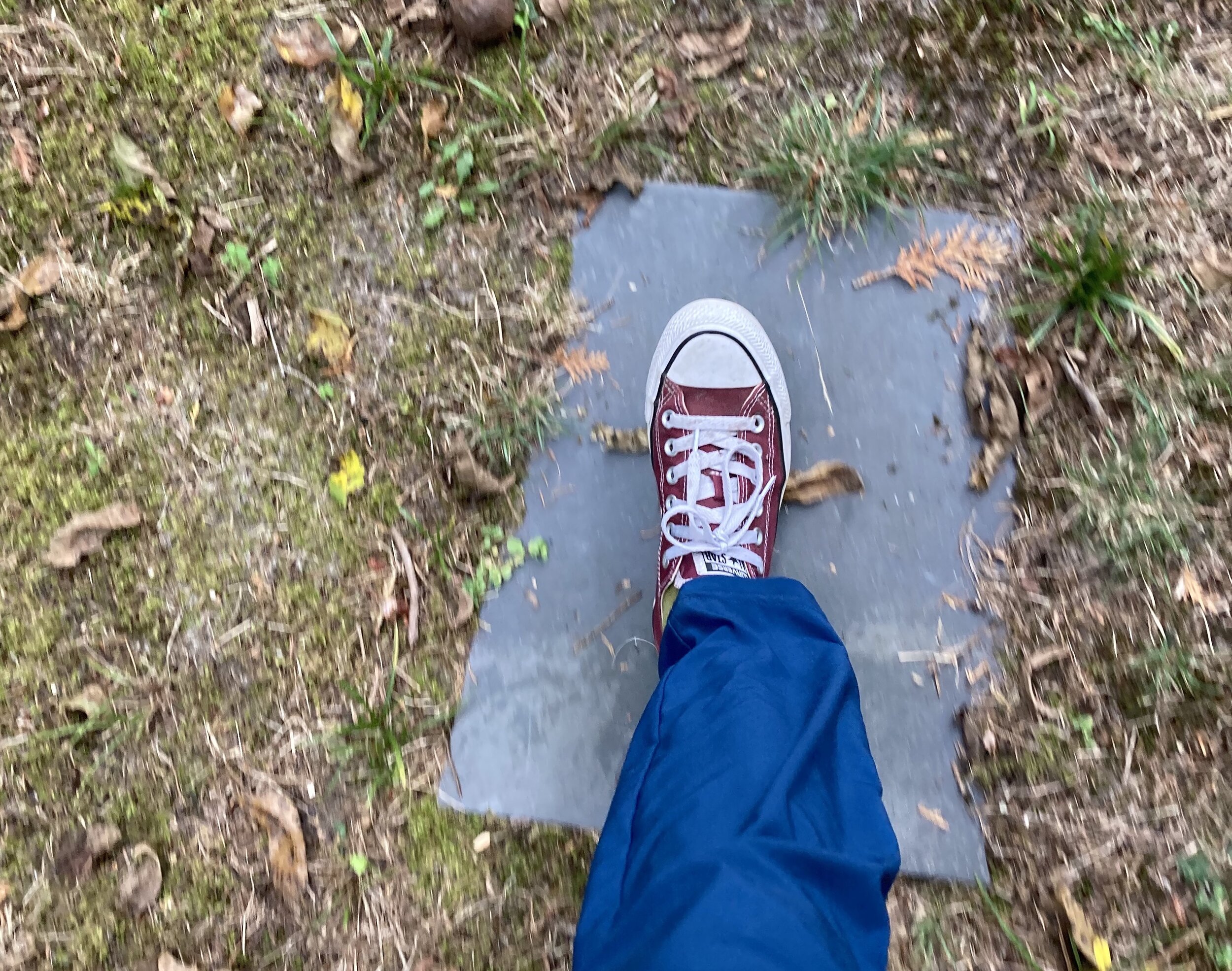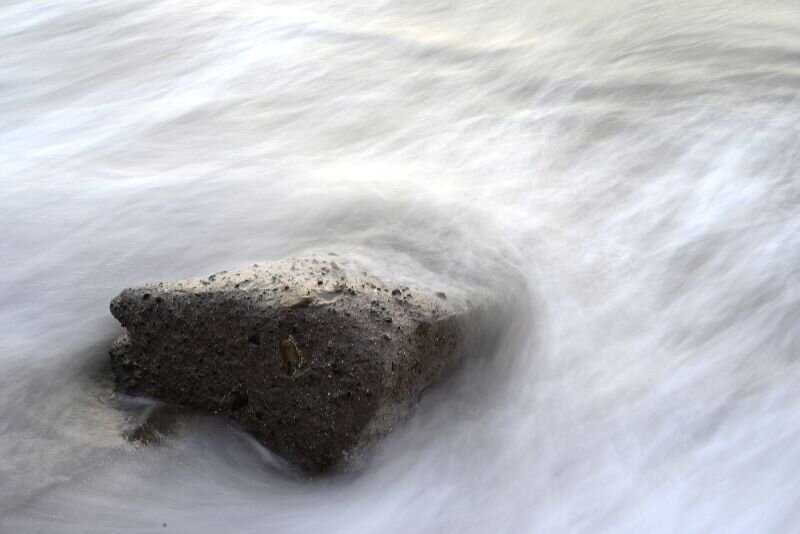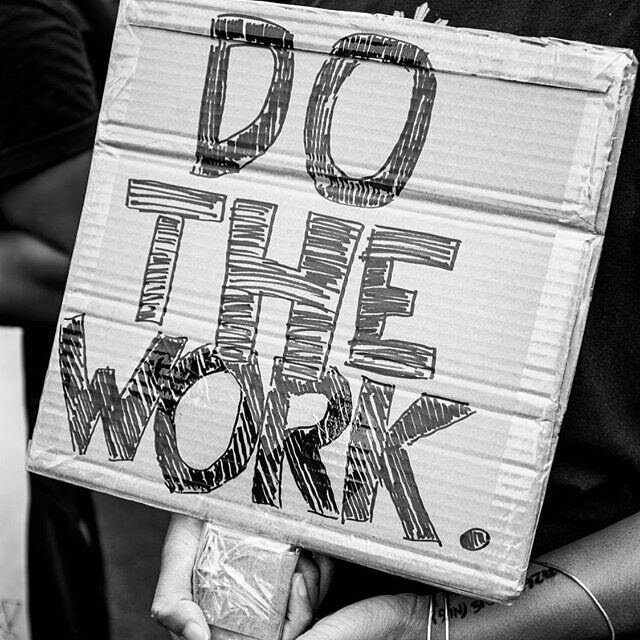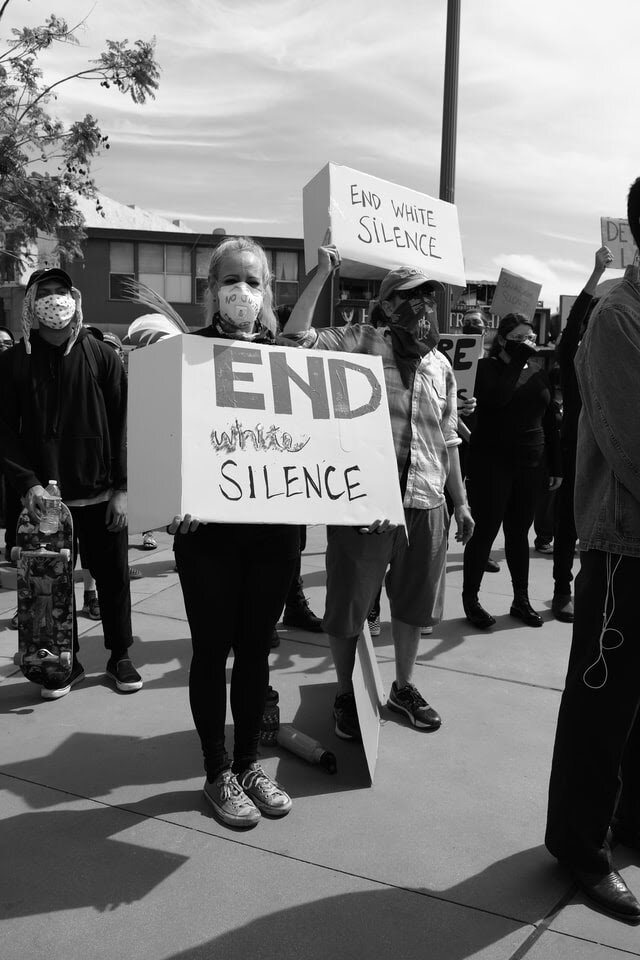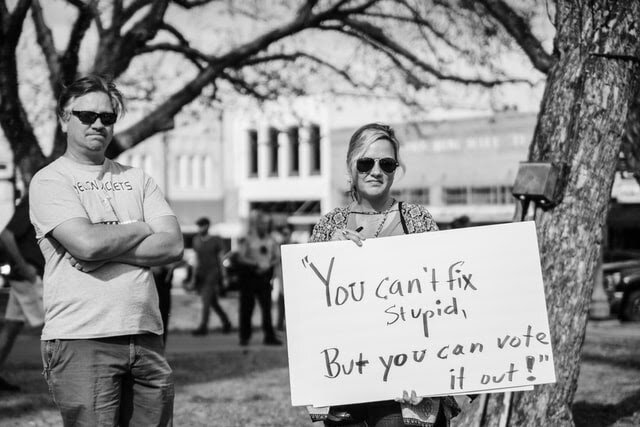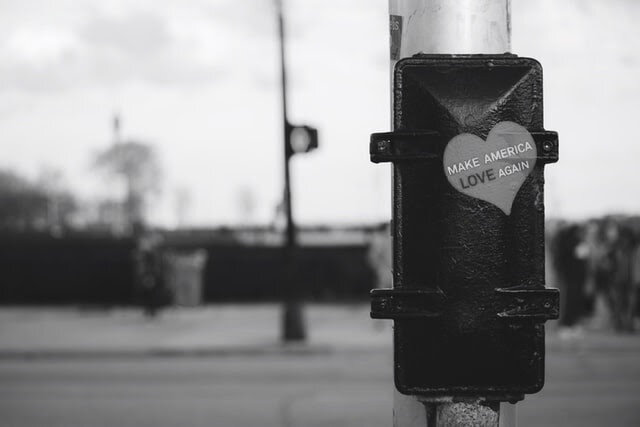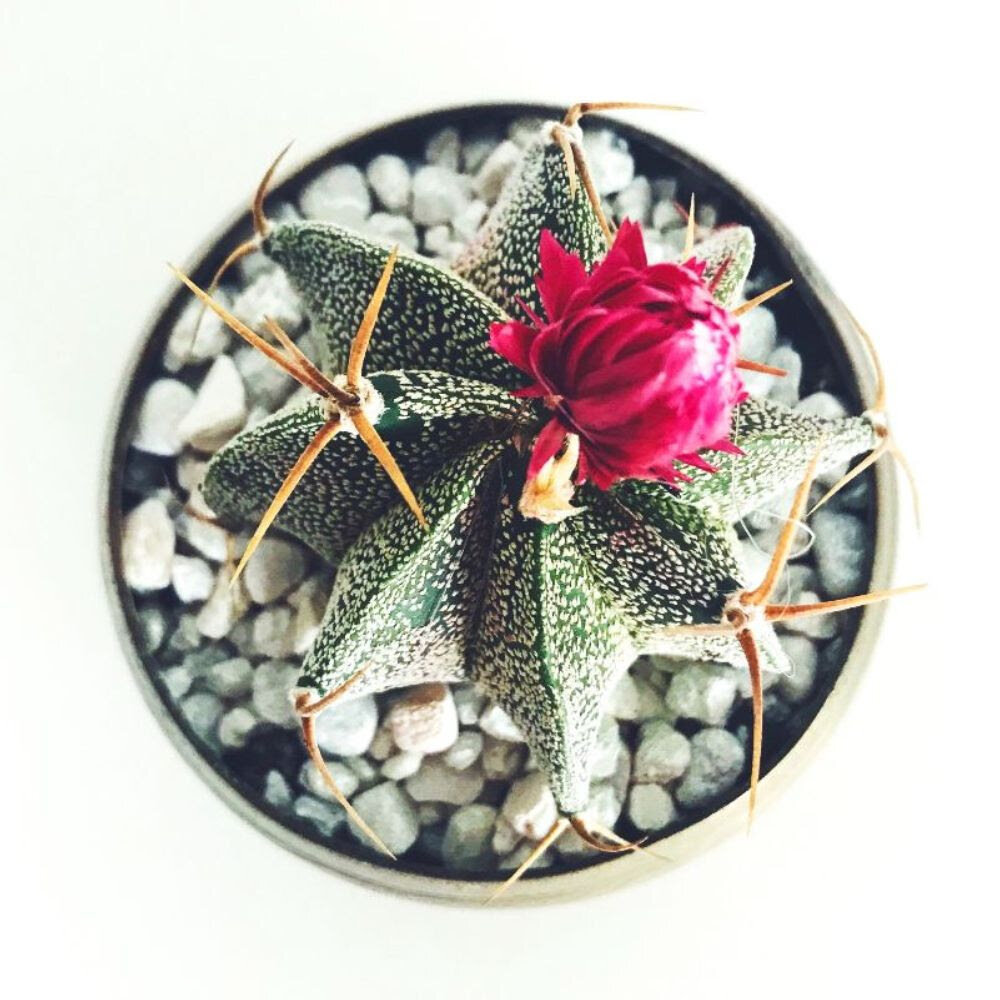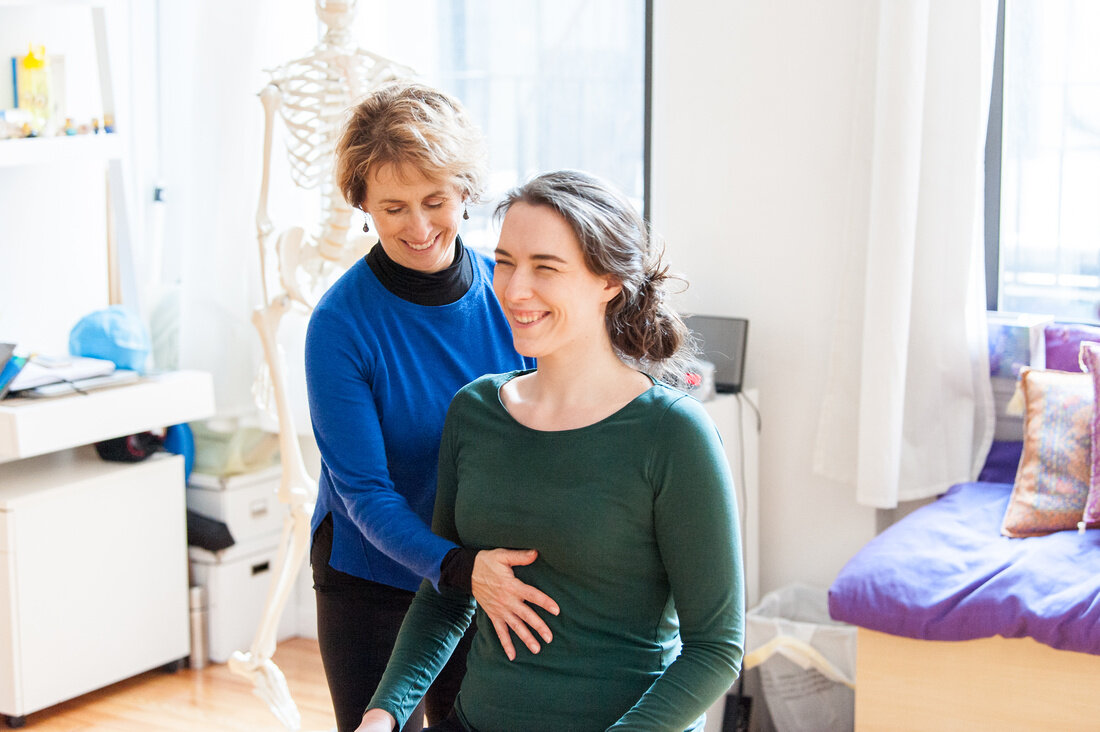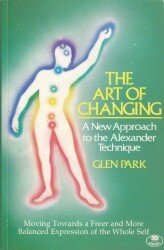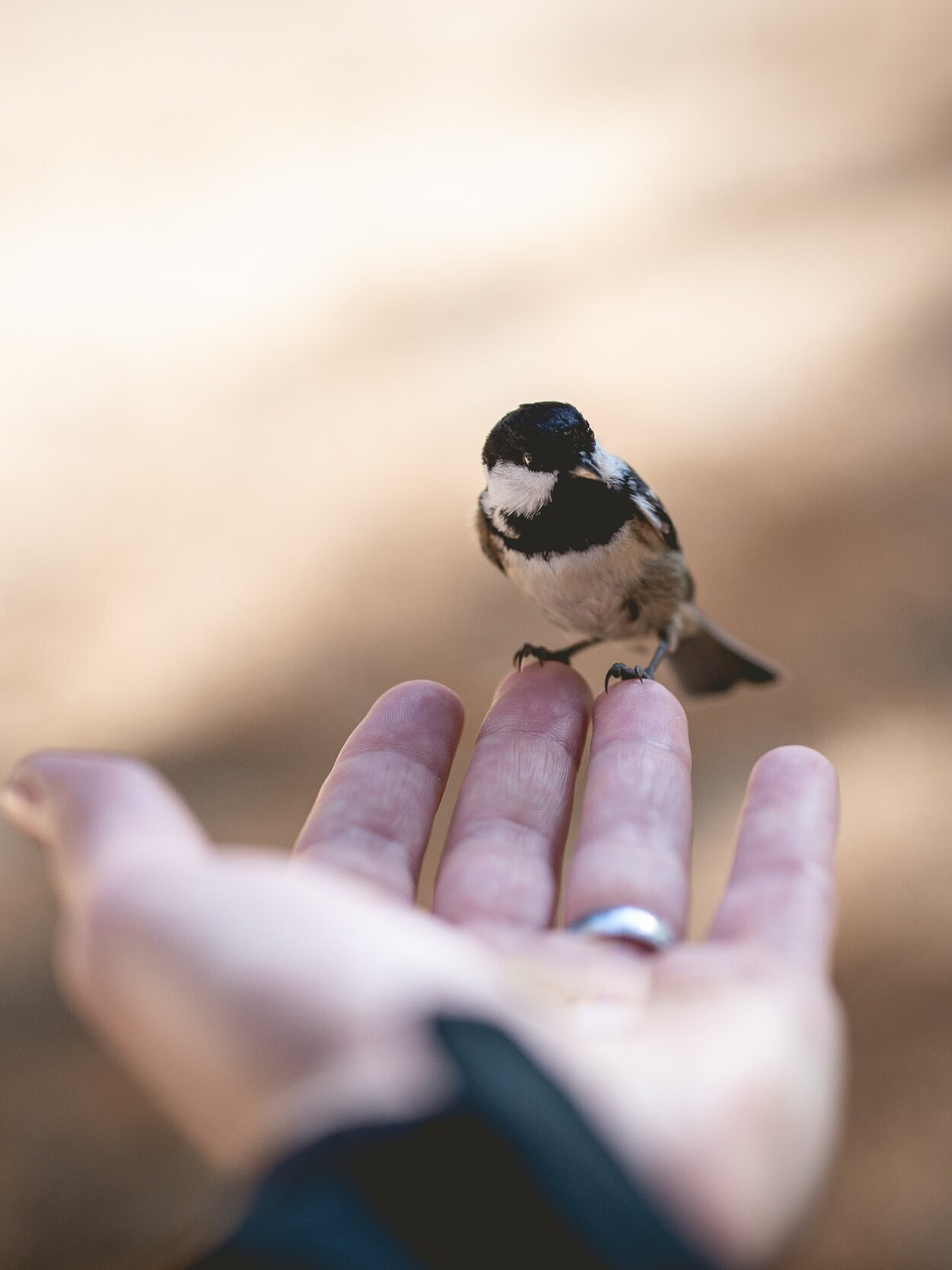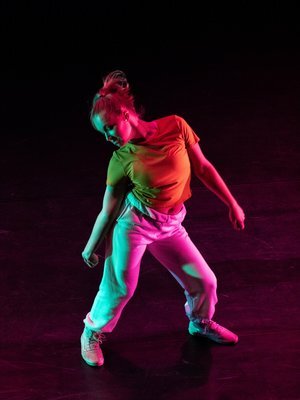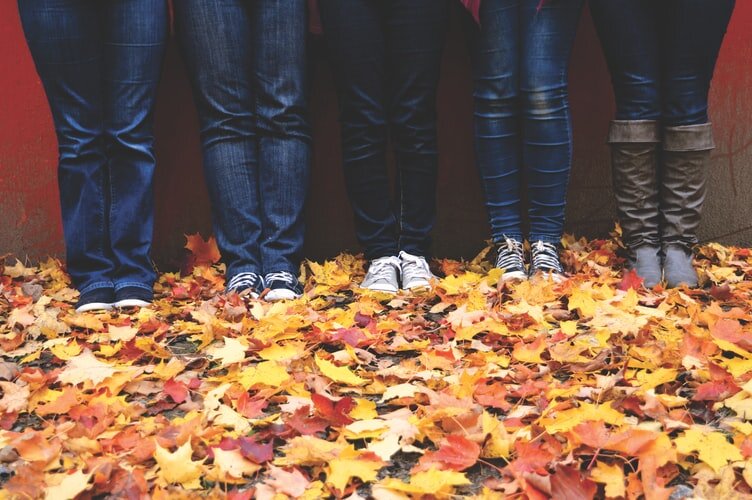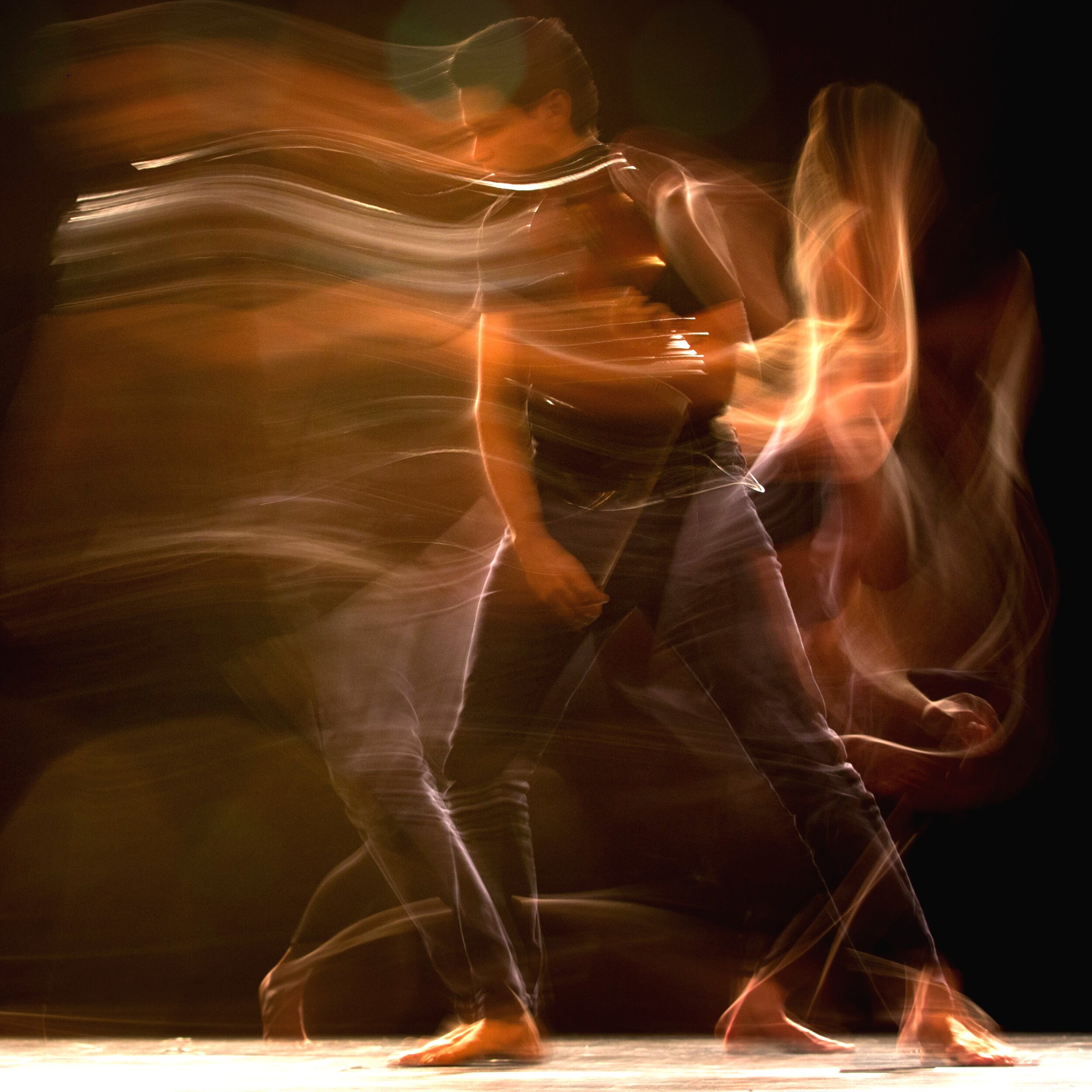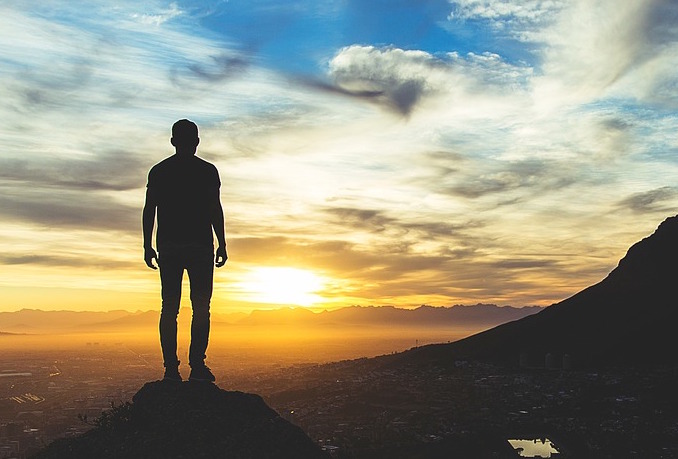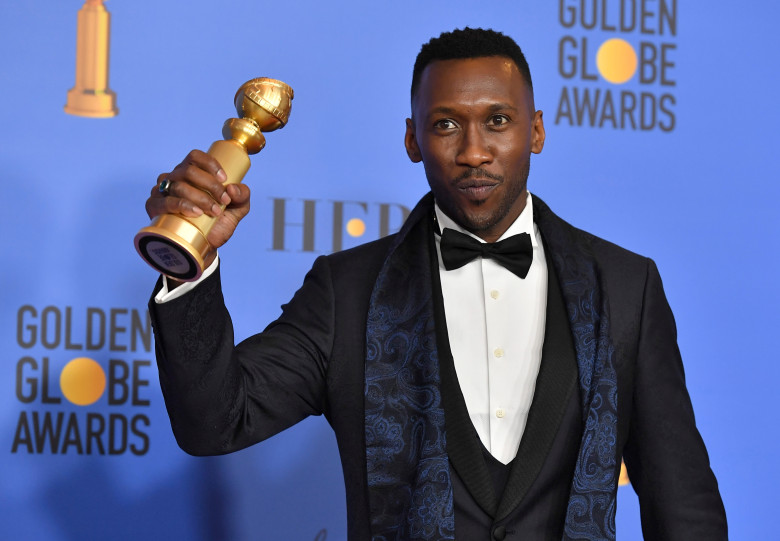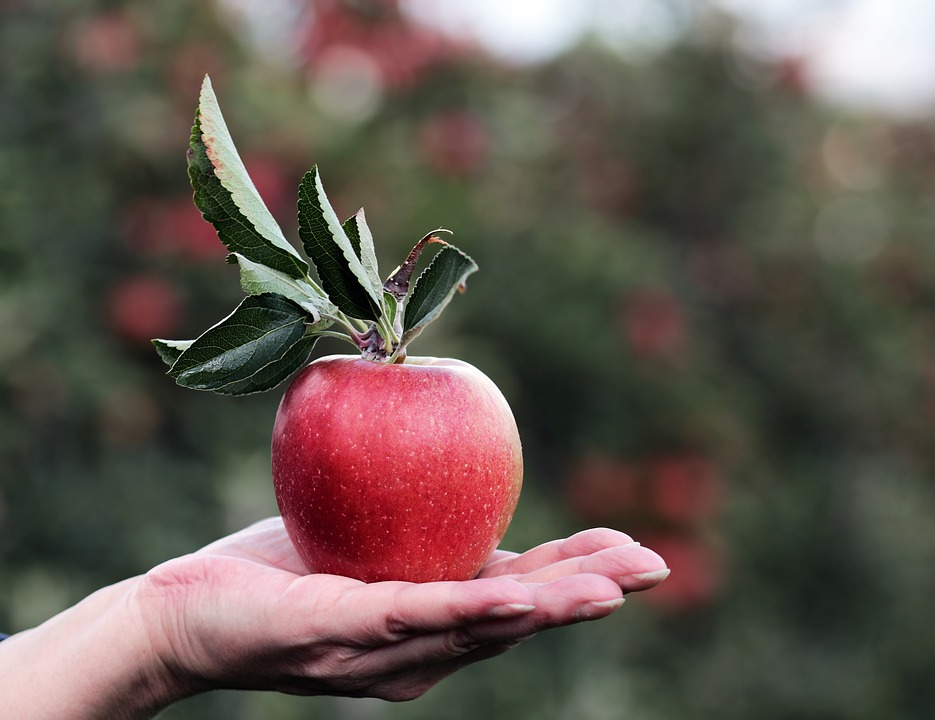
How You Move Matters
Free Alexander Technique Exercises, Tips, and Resources
2024 - Starting from Awesome
It’s the beginning of a new year.
What if, instead of making resolutions to improve/fix ourselves, we resolve to wake up and accept our awesomeness as the beginning point. What if we start from awesome – what will we do next?
I want to start with my feet on the high ground and ready to go… and so I’m curious about how to dispel this tendency to think of ourselves as faulty or incomplete. How do we frame our potential and our options?
I admit I can feel cranky when someone asks me if I have fear that holds me back from accepting my awesomeness…Yes, I do. Many of us feel fear when facing big theoretical ideals or tender spots. Just as we can feel fear at the onset of a new year, particularly one that already includes so many daunting issues.
Courage doesn’t just arise easily when we demand it of yourselves. When I try to talk myself into courage or self-confidence, I inevitably feel disappointment in the face of the ideal I’m reaching for. It’s as though my starting point is a “0” or worse, not awesomeness, at all.
More than ever, the world needs us to be awake, to come to terms with our resiliency, our power of choice and our innate ability for love.
I’m paraphrasing Howard Thurman.
His words are:
“Don't ask yourself what the world needs. Ask yourself what makes you come alive, and go do that, because what the world needs is people who have come alive.”
My favorite part of this quote is “and go do that”. When we are deeply involved in something we care about, problem solving is not about us - we are not a problem. Excitement, creativity and courage rise out of meeting limitations or challenges, especially when we care about something or someone. We find this in art making and Alexander Technique – the power of attending to process reveals our humanity and stimulates us towards more growth and discoveries. (Starting from awesome!)
I am so fortunate to spend many hours a day practicing expanded awareness and resiliency with truly beautiful, amazing human beings. If you’re reading this, you’re probably one of them. When you become more aligned with an embodied understanding of what you are capable of, you are exactly what the world wants. I have witnessed this. And when you’re feeling lousy and awkward, but you come to class or a session anyway, you are exactly what the world needs you to be, too: sensitive, curious, inventive, growing and changing.
I look forward to what you will do this year with your awesomeness.
Note: The AT Motion January 2024 Intensive is about Expanding Presence not fixing or bettering yourself. It’s a 3 week reset for being present and growing further, preparing to use your whole amazing, breathing, moving, awesome self!
A Lesson from Swallows
It’s September and I am getting a lesson in lateral collaboration from the flocking birds. Rather than a top down group organization with one executive leader, the flock as a whole moves together, sharing the leadership. Within large flocking groups, called murmurations, changes in direction happen from any single bird, passing like a wave or spiral throughout the group. Scientists have found that the movement changes each bird makes happen faster while flocking than when reacting to a loud sound or other external stimuli. This kind of embodied intelligence is efficient and maintains the steady integrity of the whole community.. Embodied intelligence is also vital for humans, within our own selves and in how we interact with each other.
Photo by Rowan Heuvel on Unsplash
Think for a moment of the flock as a metaphor for the whole person. Consider how collaboratively our bodies can move, as an integrated system - without second guessing ourselves. I recently wrote about my experience of interference within my internal communication system (proprioception). It took a lot of extra cerebral work to compensate while my sprained ankle healed. I have a renewed appreciation for how much daily effort goes into simple movement if there’s an interruption in the communication The metaphor of the flock helps me recognize the excessive mental work. Regaining my inner flocking involves letting go of what is not needed, especially that urge to get ahead of what I can sense in the present moment.
Our kinesthetic sense, the sense of moving in space and the flow of movement, is a key part of our embodied intelligence. Trusting and relying on this sense, can release us from “being in our heads” or over-thinking our actions. If the birds in flight were to anticipate the changes in direction they would interfere with the smooth transitions of the group, and the soaring pleasure of unified movement.
Whether it’s hard won or part of the invisible flow of day to day activities, collaborative movement brings pleasure, a sense of ease and unity. The murmuration of swallows is beautiful to experience if you’re able to get out in nature this time of year. .
Here’s an example:
Tree Swallows moving together, creating patterns as they fly. A lesson in collaboration.
Kinesthetic sense? Try this:
Here’s a simple following experiment to try with a friend, touching fingertips.
1. Sit or stand facing each other and connect with just the tips of your index fingers. One person will be the leader, moving their hand continuously and smoothly. If the follower is sighted, they will close their eyes as they move with the leader.
Could you notice what it’s like to follow without anticipating the next move.
2. Switch roles.
Did you notice how much you are relying on your kinesthetic sense? – was this easy? or do you find your executive mind wants to interfere?
3. Return to touching fingertips. This time you are a flock. The objective is to move smoothly and continuously together. One person will start the movement but at any moment the other person can redirect the movement. Try this with your eyes closed
Did you find some lateral collaborative flow?
From the Ankle Up and Down. (my story of proprioception)
If I haven’t already told you, a hunk of my summer has been about healing. In July, I tripped on a pothole and sprained my ankle. I wouldn’t say that the recovery and rehab process is a “gift” but it has been an opportunity to re-experience the significance of proprioception - sometimes called the sixth sense.
Proprioception is our sense of our bodies’ presence in space (unless a person is missing certain receptors in their brain). You use your proprioceptive sense to know, for example, where your nose is (without looking in a mirror). Try this: close your eyes and touch the tip of your nose. The accuracy of that action relies on your proprioception.
It was illuminating for me when the Physical Therapist tested my ability to stand on one foot and then rise up onto my toes. I could barely do it on my injured leg. My balance was wobbly – and it hurt. The muscles were just not getting the signals I was sending. The “noise” from the swelling, and the injury itself, created interference that blocked the communication to my ankle. It was as though I couldn’t quite ‘find’ the muscles.
There’s some wisdom in this interference. The bruised and strained tissue of my foot and ankle need more rest. And yet I also need to move in order to heal, thoughtfully but not fearfully. It takes a “leap of faith” to follow the logic of exercise because it doesn’t “feel” like it would be a good idea! I have to call upon my curious self, “I wonder what will happen if…”. I use my integration of the Alexander Technique as I move my ankle.
Little by little, the interference (swelling, soreness) is diminishing and the nuances of self-perception are coming through. Each day I’m making some time for re-learning how to reconnect with myself at my ankle. It’s been a good excuse for more consistent fitness and some pleasurable, visceral time on the mat. It has been a process of re-membering and it takes consistent practice. (For a chuckle, look at this video - Brian Altemus and I drawing the ABC’s to move and lubricate our stiff, healing ankles).
Maybe you’ve experienced a similar process when you started using the Alexander Technique. Do you remember that you needed to practice re-organizing your patterns of moving? Did it take some re-membering? Even right now, as you're reading this, does it take a moment to orient and sense where your body is in space - perhaps in relationship to the floor? Proprioception sets the stage for you to take in other senses, like how the floor receives your weight. Is it kind of like starting all over from the beginning again and again? I'm right in there with you!!
Ready ...or not?
Are you ready?
This is the first in a new series on cultivating curiosity. In earlier posts I offered some tools from mindfulness and Alexander Technique for grappling with strong emotions. One of the tools was curiosity. In AT we develop a curiosity for how we go about things, how we react, how we make choices.
Let’s investigate the AT invitation for emotional-physical-social-spiritual awareness so that we can be more simply present!
Simply present? Sometimes simple is a big deal! …Or not.
What if we just met up and I asked you, “How ya doin’?”
That seems like a simple question…
What does it take for you to answer that question honestly? What shifts take place in your body? Where do you sense tightness or looseness?
Do you search for feelings in your body to help you to answer that question? Do you recognize any of these feelings enough to name them (shyness, flirtation, regret…)?
Do body located sensations help us listen to each other with more compassion?
Have you noticed how you share emotional sensations with a person you empathize with? Or not?
We have expressions, ”I feel you!”, “you make me feel…” or “No, I feel really differently”!
I’m looking at articles today about emotional centers; where we absorb or express feelings in our bodies. There is a well known study from 2013 about the experience of emotional embodiment, showing areas of the body where people report feeling activated and deactivated in association to emotional states.
https://www.npr.org/sections/health-shots/2013/12/30/258313116/mapping-emotions-on-the-body-love-makes-us-warm-all-over
Looking at these images evokes feelings in me — particularly empathy for what it was like to participate in this research. How would I feel ready to report my embodiment of emotions? When do I feel safe enough and ready to evoke strong feelings?
Pause assumptions about awareness.
I wonder about expectations or assumptions of openness and awareness in AT lessons and classes. Are we making the time to be ready to experience and understand sensations related to movement, let alone the embodied emotional sensations?
Seems like a lot of awareness is being asked for.
Is this easy for you? Hard? Somewhere in between? I would love to hear from you about this.
We’ve all been trained to disembody to some extent. Some of us have been taught about our emotional intelligence. But not equally.
Many people have never been given a safe invitation.
An offer
Let’s give ourselves a moment for readiness. No pressure, just a simple activity, using curiosity.
I invite you to use your tactile sense. Identify something in the space around you that interests you. That would be interesting to touch.
Imagine touching it. Imagine the texture, the temperature, imagine your fingers moving along the surface or resting in one spot. I like this moment of Not touching it, this gives me a moment to get my sensory system ready and available.
Now, touch the object. Is it pleasant to touch, or not? If you can hold it, does it have weight? Do you like holding it, or not?
Orient yourself to the floor using the sensations through your feet. (Is it very hard? Is it cool? Can you rest your weight on the floor?)
Take a fresh look at the space you are in.
Are you feeling ready?
Now, can I ask you “how ya doin”?
And could you ask me, too?
…Or not.
Here we are... Now
Now.
So here we are… we might have started feeling lost or overwhelmed or caught up in an emotional spiral. And we decided to do something else. (how brave!). And where are we now?
Maybe you’re sore, maybe thirsty. Perhaps. And maybe a bit raw but also more open, no longer fighting yourself. Listening in a fresh way. Taking in. Taking in is nurturing, it’s kindness, it is care and compassion.
In this series, I’ve been drawing connections between the Alexander principles and a mindfulness practice, RAIN. There’s something refreshing and renewing about how both methods invite us to focus on the feelings at hand rather than grasp a result.
We began with R - recognize and followed a sometimes challenging intentional practice: A - allow and I - investigate. Now we are ready for N.
It is already here! Take it in: you are OK, you are here, now.
I’ve seen N of RAIN called a few different things: non-attachment, nurturing, natural awareness. I think it is also our natural coordination. When we stand as our honest selves our actions are centered, and we have a sense of being. Alexander recognized natural poise and taught people to get out of their own way so that they could access their deeper sense of strength and readiness.
Your natural coordination might be felt as a kind of tall peacefulness, from head to heels, an embodiment of non-attachment. You aren’t the emotions, you aren’t your habits; your identity is not defined by your feelings. Have you noticed that when you take a break from making things about you that your compassion comes to the forefront? For others and for yourself.
In this final post on RAIN and AT practice we get to rest in the Now, to simply be. What if we let go of rushing and doing and trying? Even while there is injustice, war, and climate change. Whether you sit or stand or lie down in Active Rest, you get to rest and to be. Now.
One of my favorite poems:
Keeping Quiet, by Pablo Neruda,
Now we will count to twelve
and we will all keep still
for once on the face of the earth,
let's not speak in any language;
let's stop for a second,
and not move our arms so much.
It would be an exotic moment
without rush, without engines;
we would all be together
in a sudden strangeness.
Fishermen in the cold sea
would not harm whales
and the man gathering salt
would not look at his hurt hands.
Those who prepare green wars,
wars with gas, wars with fire,
victories with no survivors,
would put on clean clothes
and walk about with their brothers
in the shade, doing nothing.
What I want should not be confused
with total inactivity.
Life is what it is about...
If we were not so single-minded
about keeping our lives moving,
and for once could do nothing,
perhaps a huge silence
might interrupt this sadness
of never understanding ourselves
and of threatening ourselves with
death.
Now I'll count up to twelve
and you keep quiet and I will go.
Photo credits:
Photo by dan carlson on Unsplash
Photo by Danie Franco on Unsplash
Photo by Zachary Keimig on Unsplash
Photo by Maria Teneva on Unsplash
Let Your Curiosity Lead
Rain series: Investigate
Sometimes when the onslaught of feelings is like a downpour, so suddenly overwhelming, we can only think of getting away. “I don’t want these feelings!” (or the embodiment of these feelings). The 4-part process of RAIN is synchronous with the Alexander process – we use it to create a kind space within the storm. A space for curiosity, perhaps.
Following R- recognize and A - allow, we come to I - investigate. Yes, we are staying with the sensations, the emotions, the interruption of life just a bit longer — even if immediate relief seems like the thing we crave. Making time and space for investigation could lead us toward freedom, in the long run.
Let your curiosity lead for a few moments.
What stands out? What seems most important right now? Hmm… What feelings are prominent in your body? What are the emotional feelings rising to the front of your attention? Is there a boundary that contains these feelings, or not? Hmm…
This is where kindness comes in. As you investigate and uncover what is going on, bring an “isn’t that interesting” attitude toward yourself. Otherwise “I don’t like these feelings” can become “I don’t like myself”. As an investigator, you are learning — so proceed with tenderness and respect.
Here is a recording that will lead you through a 5 min break, Listening in (with kindness).
More curiosity, more investigating: Do you notice a certain viewpoint, like a lens or a way of seeing things? Is this lens familiar to you? Hmm…isn’t that interesting.
How does this viewpoint or lens define your experience, your sensations? What does this lens filter out? …Hmm.
Biases are learned; we develop them through practice. Practiced behavior becomes invisible, becoming a regular part of our point of view and coloring our reality. Implicit biases can be shaken out when we are feeling vulnerable. Trust your inherent goodness and take a deeper look. Our perspectives can change with a simple, hmm. It’s like opening a locked door – what or who have we been keeping out? Isn’t that interesting!
Allowing: Quiet the Critic!
At the core of ‘allowing'' is a willingness to just “be” with yourself. But am I pausing for quiet or enforcing silence? Stillness can be radically charged by our attitude toward staying in the moment. Where in your body and breath do you sense your reaction to pausing right now and “taking a moment”? What about your stamina for staying with the pause? When do you enjoy hovering in this space? When do you feel that itch to move on asap?
As I’m playing with the mindfulness sequence of RAIN (Recognize, Allow, Investigate, Non-attachment (nourishing) I’m alternately appreciating and resisting A: to allow. Allow follows Recognize.
Frankly, it’s a challenge to stay with what I recognize, to allow for what is to just be for a while. I enjoy doing this for someone else, but for me? Not so much. A little panic tightens my chest and throat. I worry: will I be stuck with my emotions or my tension if I allow them to resonate within me a little longer?
And often this space of allowing is not quiet – it’s filled with noise! Inner voices tell me I shouldn’t be feeling what I am feeling. The voices say that I should know better (be better).These thoughts are stories from another time. I can remember this if I stay with what I’m recognizing, but with more tenderness. Allowing myself to be with my discomfort brings me into more compassion, for self and for other people. I can notice that other people are with me - people who aren’t interested in the stories of my imperfections because these stories keep us apart.
One of my first experiences of receiving guided touch from an Alexander Technique teacher was a revelation of allowing. I was resting on a bodywork table. She lifted my leg with such care and knowledge that I stopped trying to be a “good student”. Instead of moving my leg myself, I experienced my leg. I was amazed at the feelings of flowing energy and the feelings of thick resistance! It was as if she gave me an extension of time to recognize myself, time to acknowledge the interference of my habitual patterns, but no time to get lost in self-criticism – she did not treat me as though I was “wrong”. I was given a gift of time to wonder and to gain more curiosity, not to shut down or avoid.
I invite you to allow: to pause and appreciate. To stop the “stories” of pretending or blaming or wishing to be something else. Appreciation is knowledge and respect.
Perfectionism: your days are numbered.
Photo by alexey turenkov on Unsplash, Photo by Ali Abdul Rahman on Unsplash
Feeling Lost? Where to Start.
Where am I?… locating yourself is the first step.
Recognize where you are, especially when you’re under stress, feeling anxiousness or the tidal pull of habit. “You have to be somewhere to go somewhere” (Kari Margolis) is good acting advice, and good life advice. Where you are right now is probably quite familiar once you pause and take it in.
In my previous blog I described RAIN (Recognize, Allow, Investigate, Nurture/Non-attachment), a mindfulness practice for stress reduction. Let’s start by unpacking the R (recognize) – and finding the connection to our Alexander process.
If you are feeling lost in an emotion or feeling an all too familiar pain in your body, try this 3 point process:
Pause and recognize where you are.
Name the place (I am on the subway, I am in the kitchen, I am on the sidewalk, I am at my desk… you get the idea).Now continue recognizing, getting more personal and specific.
Recognize the feeling in your shoulders? Is it a tight, burning tension? Or is it like a cold brick? Is the sensation in your stomach a cramp or a flutter? Or is there a tightness in your chest?… breathe with it and describe it.Name the feeling or emotion that goes with the sensation
Naming will help you recognize. (This is dread, this is regret, this is anticipation…)
And yes, you do have time for this – emotional states of being do change, but not in a hurry. Can you let go of seeking comfort or numbness for a few more minutes? This takes a bit of courage –you’ve got it.
Have you noticed that pain and fear are the close companions of empathy and compassion? Recognizing your fallible humanity strengthens your connection to others. You are directing kindness to yourself by not turning away from the feelings - not pretending you aren’t exactly where you are.
"Having compassion starts and ends with having compassion for all those unwanted parts of ourselves”.
(Pema Chödrön).
Photo by Jon Tyson on Unsplash. . Photo by Artur Rutkowski on Unsplash
RAIN
tamas-kolossa
Having Feelings? RAIN is our resource.
You may already know that in mindfulness practice, there is an acronym RAIN that is a very useful guide for meditation (see Tara Brach). Recognize, Allow, Investigate, Nurture (or Non-attachment to a narrow identity). It’s very handy for actors or anyone who is dealing with feelings. I’m thinking of feelings that are really difficult and distracting for creative and expressive people. Those urgent feelings of self-doubt and self-criticism that seem to step into the front of our attention and play a part in squelching our access to a wider palette of emotional expression.
I find the Alexander based process to have a unique synchronicity with this mindfulness tool. We orient ourselves by noticing what is present around us and within ourselves. We recognize what is happening, what we are feeling. Shifting our attention to the here and now helps us to notice our options.
Just like there are triggers that set off a set of emotions, there are useful cues for shifting our attention and bringing us into a more receptive state for understanding our feelings —and updating our emotional responses. In an article for Backstage from a few years ago, I described a technique that I call “note and name” or “the name game”. It’s simply taking a few minutes to see what is in the space – noticing each thing and saying what it is (chair, window, etc). This kind of attention to the objects around you can help your brain orient you while giving you a simple doable task. Accomplishing simple tasks is surprisingly rewarding and relaxing. The 54321 grounding is an extended method of this kind of approach to steadying our nervous system. Some brilliant work has been published and taught in this realm by Resmah Menakem, Staci Haines and Peter Levine and many others who address trauma recovery and social justice. I have learned to use and respect these kinds of resources –meaningful ways to set up the inner conditions needed to be able to learn, explore and grow.
Recognize, Allow, Investigate, Nurture (or Non-attachment to a narrow identity).
Photo by Milada Vigerova on Unsplash
Watch for the next series of blog posts on the four steps of RAIN as they relate to building presence for actors, presenters, teachers and storytellers.
Some light for the New Year
I want to wish wish you a happy new year. I’m not sure, however, what that phrase means this year. The ring of those words has changed. Hoping and wishing feels naive and “happy” feels downright risky!
Undaunted, I’m wishing you some light for the new year to come. I’m imagining you, lighting a candle or watching the sunrise color the sky. A moment like that. Or a quiet moment when there is space between the noise of the room and the noise in your mind. In that light or that space, I hope you recall moments from this past year that brought you joy.
Can we take some light into this next year.? We really don’t know what we will encounter.
But I am making plans, wishes, hopes… and space to just not know. I look forward to not knowing with you.
See you in 2022.
Are you stepping it up?
A Hike or a Walk in the Woods…? Take a walk with me. I’d like to share the insights I’m experiencing as I go step by step. To begin with, I’m learning that building the strength to bounce back, to move forward and to grow -- takes RESPECT. Letting go of overworking? Honoring the patience and diligence needed for change is an act of caring from the heart. And so, I believe that the life-long learning and growth process of performing artists is an act of loving.
Challenging yourself to grow can come from cherishing what you know is in you -- you light up a screen, you charm and astonish, even frighten and disarm! Building openness and availability can sometimes feel like trudging uphill and sometimes it seems like a refreshing stroll, full of discovery. Yes. It takes respect and love to motivate this kind of deep play -- and AT practice!
Check out our offerings at AT Motion Center for Actors (ATMoCa) and find the fit for you.
We’re opening up a new membership so that you can be part of a growing community. Classes are live in the studio and online. We’ve added a new self-paced option through our Thinkific virtual classroom.
Finding Your Powerful Flow
Water meets rock...rock moves
Rock provides boundaries and changes water's direction. Water flows over rock and slowly changes the rock's form, wearing it away so that water flows through.
Form and Flow. Resistance and Movement.
It looks peaceful from a distance, but it's an ongoing process of exposure. What is exposed is beautiful, raw and honest.
My own process of change can feel this way, and maybe yours, too?
This exposed cliff at the edge of water and earth, these sharp looking rocks, bring to mind the obstacles in our bodies and also in our lives. What do you know from Alexander Technique that you can bring to the process of change?
How does AT support us in antiracism and taking a constructive part in social justice ? Can we use our water-like power of flow? My hope is that if we are willing to first face systemic racism (boulder-like), we may move it with our full power(water-like), and with consistency, turn it to pebbles and one day to sand.
“Not everything that is faced can be changed, but nothing can be changed until it is faced.”
― James Baldwin
Do the Work
Do the work...
This has been quite a week. Have you been listening and reflecting? Are you experiencing waves of emotions? How have you been expressing your feelings and thoughts?
Tragically, it's taken the heart-breaking deaths of George Floyd, Breonna Taylor, Ahmaud Arbury to bring us together in calling for action. Because Black Lives Matter!
As the systemic racial injustice has been exposed, we can no longer avoid acknowledging the ongoing discrimination in our own lives and community.
So even within a small studio like ATMOTION, meaningful and on-going reflection must be undertaken. We are listening and educating ourselves, finding our blind spots, We're learning with humility what we need to embody more clearly, where we need to act with more courage. I want our AT studio and practice to be a strong space and a safe place. That's why I'm committing to the long game - to the ongoing work of ending racism and oppression. It's been a week of sending donations and emails, joining rallies and marching. And what can I do next week and all the weeks after? Show up and do the work. With love.
“The practice of love offers no place of safety. We risk loss, hurt, pain. We risk being acted upon by forces outside our control.”
― Bell Hooks, All About Love: New Visions
Here's something I wrote in an earlier blog post - seems appropriate now:
Let's show up. Let's notice whatever it is we are feeling, and let's be steady friends: let's not run away or distract ourselves. Keep it simple, don't try to improve. We can build steadfastness - our willingness to show up and to stay - for ourselves. Just like we stay in there with our dearest friends. This is not selfish or trivial. When we refresh our intention to be present, we not only show up for ourselves, we build the inner strength for steadfast friendship with everyone. When we stay with ourselves through aches or boredom, through inpatient energy or the release of old memories, through pleasurable lightness and flow -- we build our stamina to be here and deal with the now. The decision to be present leads to recognizing the we are whole beings, that we are resilient.
Are you with me?
VOTE. IF YOU DO NOTHING ELSE - VOTE,
PLEASE VOTE!
MAKE AMERICA LOVE AGAIN
Why have an intention to show up?
One of the reasons I appreciate Pema Chôdrôn is her ease with being honest. She freely acknowledges that all of us can feel like a basket case at times, and yet we're always worthy of loving kindness. Maitri (loving kindness), an essential part of Buddhist mediation. Similarly to meditation, using Alexander Technique gives you the opportunity to get to know all aspects of yourself - you sense more and so more acutely understand your choices.
Judging ourselves for whether or not we are "getting it" or "improving" is just not useful. It's a kind of subtle aggression toward ourselves...not kindness, not friendly. I can feel that aggression creeping in this week,"it's been weeks at home, why haven't I taken the plank challenge, or written a screenplay yet"...?!
So this is what I'm doing this week, and I hope you'll join me:
Let's show up. Let's notice whatever it is we are feeling, and let's be steady friends: let's not run away or distract ourselves. Keep it simple, don't try to improve. We can build steadfastness - our willingness to show up and to stay - for ourselves. Just like we stay in there with our dearest friends.
This is not selfish or trivial. When we refresh our intention to be present, we not only show up for ourselves, we build the inner strength for steadfast friendship with everyone. When we stay with ourselves through aches or boredom, through inpatient energy or the release of old memories, through pleasurable lightness and flow -- we build our stamina to be here and deal with the now. The decision to be present leads to recognizing the we are whole beings, that we are resilient.
Are you with me?
Agreement leads to Pleasure
“There is a lot more pleasure when we do something with the amount of effort it requires.” - Belinda Mello, as quoted in Your Body is Working Harder Than It Needs To by David Lobenstine
Do you feel a spark of joy when you say "yes" to something AND really mean it? The sensation of being in agreement often feels like “lightening up”! Or maybe you feel relief, like you’ve dropped a weight.
The pleasurable feeling of moving with agreement is akin to moving with efficiency. We tend to do the things we want to do with just the effort required. Think of the contrast between a child reluctantly dragging their feet versus their buoyant steps of happiness.
I have time
Giving yourself the time you need to agree to your actions is crucial to managing your effort and avoiding strain. This is at the heart of AT (Alexander Technique) practice.
I was recently interviewed by David Lobenstine for his article, Your Body Is Working Harder Than It Needs To, published on Medium. It’s about over-efforting, and how to avoid strain. He has quoted me on the issue of anticipatory tension. When we are ahead of ourselves we tend to add more work or tension. Having an agreement-first attitude sets us up to be in the moment and ready.
Of course we all have things we are obligated to do that we don't enjoy. Sometimes we need to take a moment to pause to see the bigger picture. Moving efficiently means taking care of yourself — using Alexander Technique to move through a task with the support you require. There is a lot more time for pleasure when you move with freedom and ease.
One of my favorite poems by Gurdjeiff evokes embodied agreement: ...
I stand
I walk
I run through the fields
I leap
I leap
I stop without a sound
I jump up on a wall
I reach for the bell
I ring
I ring
I ring
I see far
wide
high
still taller
I stand...
Re-Membering: including emotions with body and mind
Re-membering?
One of the first books I read about the Alexander Technique, The Art of Changing, still inspires fresh thoughts. I recently took Glen Park’s book off the shelf (FYI in other additions is titled A New Approach to the Alexander Technique). In it I found a section on Emotional Armouring.
“Because the mind, body and emotions are all different expressions of the Self, the whole, they cannot be split off from each other, and our attempts to cut off emotions will be reflected in the body and the mind”.
I was particularly drawn to the word “re-membering”, used as a way to describe connecting the dis-membered self back into unity. This past week’s lessons and classes have focused on appreciating changes in the emotional life of the Self, the Unified Self, which is at the center of our approach to the Alexander Technique, here at AT Motion.
More to share & something you can do for yourself
Take a few minutes to observe yourself before and after each AT lesson or class. Taking notes will give you time to prepare, and then time to integrate or reflect on your experiences -- deepening them in your memory. I recommend using three categories of observations from Glen Park’s book: sensations, emotions and thoughts.
Sensations: Notice your sensations before you try to change them. It’s so compelling to fix what feels wrong or uncomfortable. Sensation is the physical intelligence data that you need to make informed decisions. You are developing the skill of making more sense of your sensations. Sensing the space around you will also reveal your personal sensations. Take a few moments to notice and then to take notes brings language to your non-verbal experiences, helping you to communicate how something affects you, even if you have to invent the words.
Emotions: Internal sensation is the basis of emotion -- it’s how we know that we are having feelings. You may notice your emotions as an overall emotional quality or mood. If you can, take time to get to know the feelings -- record them in words or drawings. Pleasurable and painful feelings can arise unexpectedly, seemingly uninvited. Emotions connected to past experiences that have not yet been expressed and released will often latch onto new but similar experiences in the present moment. If you are working through some historical/past distress, you may want to take a moment to regain balance in your attention. Notice least one pleasant thing in the surrounding place or room. Exhale softly and slowly, then let in an easy inhale so you can sigh. Taking a few moments to observe and record your emotions or mood before and after a lesson can build confidence, trust in yourself and honesty with others.
Thoughts: Sensations and emotions are reflective of the beliefs and ideas we live by. In an Alexander Technique lesson, changes or shifts from familiar ways of moving and being can provoke thoughts. You might find yourself creating inner monologues or scenarios. You might hear very critical thoughts playing out in your head, or “rules” about what is or isn’t possible. You might come up with a new idea, find an inspiration or a very deep understanding. Perspective can shift. Any thought that has a particular quality or flavor is worth noticing - and taking notes.
All of these ways of appreciating your experience will build more accurate observation skills while you re-member. And done with kindness, you will build respect for our human design for …being human!
Photo by Max Kleinen on Unsplash
Character Transformation Technique Starts with You
How does AT factor into the very intimate and imaginative (sometimes magical) experience of embodying a character?
First know thyself! This comes with practicing lively awareness: emotional, physical, social. Awareness of self in the present place and moment. When we develop our interactive and personal awareness, extra habits and tensions can be paired away. Release of this “extra stuff” clears the way for more creative choice. We can deepen our sensing and gather more specific knowledge -- knowledge becomes tools.
Making Choices means knowing you have choices! Once you have a strong inner communication going, once you are consciously making choices about yourself, then working within the particular tendencies and limits of a character makes sense. This is when you can play! Practicing AT means practicing being clear enough to see the options. The story often gets clearer when we see the pathways laid out in the text. The fun increases!
Try this at home:
To highlight noticing you have choice, use this “classic” Alexander Technique etude:
Begin by resting your back on a wall, with your feet 6-8 inches off the wall. Each of us is formed slightly differently, but it’s likely that your pelvis and ribs are making contact. No need to flatten your back or put your head back on the wall.
Rest back on the wall -- receive the support. See what is going on around you, and decide just to stay there.
Next decide to experiment with using your legs to slide down and then up the wall. Place your hands lightly on your neck (SCM muscles) and notice what happens when you slide down, then slide up. Are you surprised by what you notice? If you tensed your neck or dropped your head, whatever the extra “thing’ is, decide to let that go.
Decide you could just wait and not not do that “thing” (tensing). Give yourself full permission not to do it. Look around the room instead. Notice how you feel - what emotions or lack of emotions come up?
Try this workshop:
Blood / Bone / Breath - Character Transformation Technique with myself and Witold Fitz-Simon.
Explore. Imagine. Transform.
Discover how your own structure: your blood, bone and breath, can spark your imagination for embodied character. Similar to animal work and mask, this technique is elemental to the creative process of character transformation but approaches transformation from a new perspective. We have so much to work with as actors -- how can you use your bones, blood, and breath to transform? Stop by and find out. Registration is open at ATMotionCenterforActors.com/Classes Come prepared to explore a character of your choice.
Posture? ... AT teachers would rather teach you about Choice!
How’s your Posture?
Marjorie Barstow, master teacher of the Alexander Technique (AT), used to say "take a good slump". She was helping us to let go of being "right" in our "posture". By starting from where we were, she was teaching us something essential about how we treat or mistreat our bodies. She gave us many examples of the accessibility of Alexander’s work. She didn’t deal in ideals about posture. Instead, she insisted that we make choices. She was insistent that we took responsibility for our coordination. She was guiding us to move more consciously through life. She was teaching us about the power of choice.
“I can’t teach anything that I haven’t done myself. I may not always do it, you know we don’t always do what we should (life would be very dull if we did). But I know when I want to have more freedom, I know what I can do and what I must do, then I make the choice of whether or not to do it.” – Marjorie Barstow, quoted in Practical Marj
Our cultural take on posture looks like a battle between a mythological ideal and the seduction of sloppy chic along with warnings about “text neck”. Social media ads feature quick fixes and devices that remind us to “straighten up”. These are mechanical solutions for inanimate objects, not people. If we pause to question the positional ideals associated with posture we will learn more about ourselves: how we move, think and feel.
Some of you may have seen it -- I was quoted recently in an article about posture, with a really great title: Is There Really Such Thing as “Good” Posture?.
[...] This picture of posture as a reflection of your outlook to life is one shared by Belinda Mello, a New York-based instructor in the Alexander Technique, the posture-centric system of bodily control subscribed to by many performers, including a few cultural A-listers. Mello, like Lederman, emphasizes that “a person’s posture isn’t a fixed position, but a way of moving.” But like Mason, she thinks value judgements like “good” and “poor” can be usefully applied to how you hold yourself. “Think about what poor posture is like to live inside,” says Mello. “It’s like being in a box, and outside the box is freedom of motion, and access to pleasure and excitement.”
Let’s get out of the posture box, please! Let’s take a break from constantly trying to improve ourselves. Let’s take on a more generous and intelligent approach as human beings - variable and resilient beings - not machines or computer-like objects. We are lively beings with a great capacity for awareness of what we are doing -- and therefore a capacity for choice.
Can we develop greater awareness of ourselves? Surely! Because we already know a lot about being human from our daily lives. We know that how we coordinate, our use, affects how we communicate. We look for the truth in another person through physical expressions in gesture and in posture. We notice postural freedom or fixation. We seek meaning from shifts in postural tension or grace.
Look at some of the celebrated people in the media, arts, business and politics -- look at how they stand, sit and move. Notice the consciousness they are embodying. Do you see their stature reflect awareness? Are they present, including all that is around them? The Oscars are a great time to observe coordination and expression!
When a person is joyful, when a person is deeply involved in something they want to do, when a person is aware of themselves while welcoming in the world around them — maybe that’s good posture!
Image by StockSnap on Pixabay
BACKSTAGE ARTICLE: Taking Care of Yourself Through 8 Shows a Week
Check out Belinda’s latest article as Backstage Expert
Taking Care of Yourself Through 8 Shows a Week:
Everyone needs a chance to rebound from stress. The good news is that you can build in a regular practice such that the more you work, the more resilient you become. To take care of yourself during these crunch times, start by dropping more small breaks for rest and stress release into your day right now. This means taking advantage of small spaces of time so your regular life as an actor includes moments for recovery…
Gratitude & Reciprocity 2018
Sharing an Attitude of Gratitude… Thank you!
Do you ever find yourself feeling grateful at the end of the day? It’s been that kind of week for me. I feel especially grateful for the people I work with in individual Alexander Technique lessons. Each week they set aside time for orienting to gravity and connecting their constructive thoughts to actions.
The AT is really a collaborative process that begins with the decision to reach beyond the limitations we’ve grown used to. The courage it takes to unravel patterns is humbling at times. I’m impressed by people of all ages who are to learning more about themselves and appreciate their openness. Engaging with the tensegrity of the body we find creative solutions for moving, breathing -- for being comfortable in one’s own skin and confident in letting one’s voice be heard.
I have a particular enthusiasm for working with actors -- truly one of my “happy places”.
But I want to send a special “shout out’ of appreciation to the non-actors who come in for AT. I won’t use their names, but I do want to share something about a few of these extraordinarily inspiring individuals.
I am so grateful to a very strong and intelligent woman in her early 90’s who is my weekly dose of optimism. The image of her walking with a wide and tall back, has stayed with me all week. “Pause” is her favorite AT tool.
Another older person I see regularly is managing symptoms of Post-Polio Syndrome. Table-work is what he seems to need and I am have been so pleased to see him becoming both more relaxed and energized. Our work together is quiet and requires very deep listening, almost like tango.
I am grateful for the younger folks as well. It has been so rewarding, for example, to teach a college student with scoliosis about the alternatives to living with pain. I appreciate his honesty and the changes he is making are profound. Also, kudos to the writer who came for posture and discovered a new ability to use her kinesthesia.
And there are a few people who have been coming in weekly for quite a while. I love that we have access to so much laughter. They have let me get to know them so well, and in return they have come to know me. They keep me honest with myself.
This is a difficult political and social climate to be living in. So much tension is being generated by an executive administration that leads with intolerance and fear mongering. How fortunate I am that my work requires me to find my balance and to be conscious of the responsibilities of my role. The principles and process of the Alexander Technique are reliable tools - I rely on them daily. And I rely on the goodwill of the amazing people who allow me teach by hand, each week.
Thank you.









